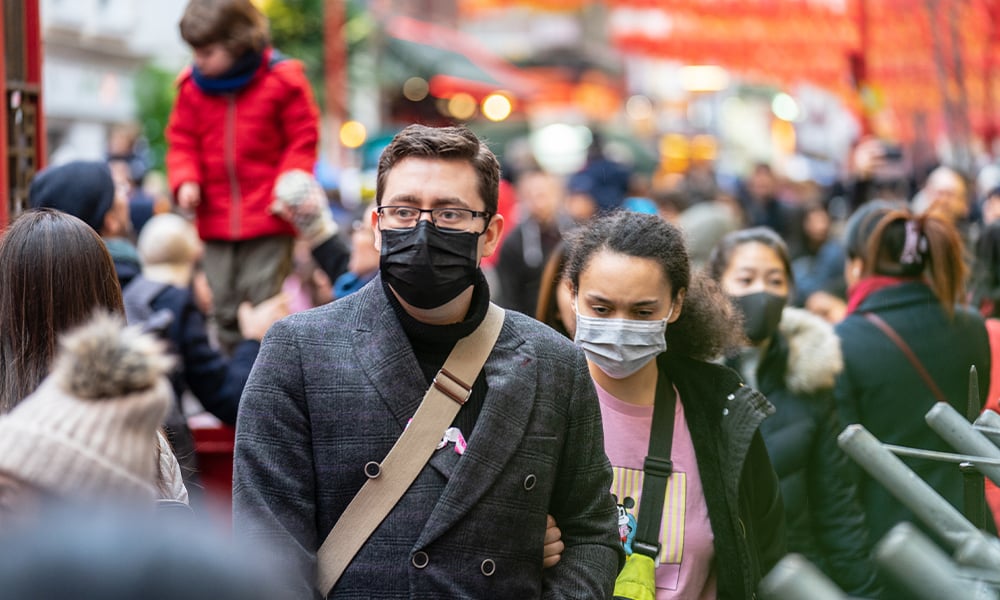‘Planning for the recovery phase of an emergency is just as important as planning for the onset of an emergency’

The first part of this article dealt with planning for recovery and a return to normal business operations.
Planning for the recovery phase of an emergency is just as important as planning for the onset of an emergency. In this case, there were some key things that should have been covered.
- Is there a drafted plan?
- Is the employer prepared to engage workplace stakeholders like the health and safety committee?
- Has the employer considered who will return to work?
- Has the employer considered a phased approach to work return?
- Does the employer have a clear understanding with employees on working from home?
- Is there some method to maintain contact with employees?
- How will the employer prepare the workplace for people who are going to return to work?
- How will the employer determine fitness for work?
- How will the plan be communicated to workers?
- How will the plan be updated to reflect feedback?
There are other things to be considered before a return to work can really be considered.
Psychosocial factors
People who have been isolated are much more prone to things like anxiety and depression. They may also develop feelings of being ostracized by the group were being left out just due to the isolation they are experiencing.
Consideration must be given to how employees will resume functioning in a social construct like an office environment or the current workplace environment. There may be a requirement for workers to have access to counseling and other support services.
This may be a very good time to give supervisors and managers basic instructions in psychological first aid. Emotional responses are not usually logical, and dealing with concerns in an empathetic way can help alleviate the concerns. That is to suggest that concerns should simply be dismissed, but that the manner in which concerns are received and discussed can have a significant effect on the outcome.
When people are returning to the workplace, they may be much more susceptible to things happening in the workplace that would normally not bother them. They are now used to being alone and even setting their own schedules.
Orientation
When people are returning to the workplace, recognize that things have changed and reinforce the plan with an orientation.
If a company has the means, they should create some kind of an orientation video to help employees understand what to expect when they do return to the workplace in addition to communicating the plan for returning to the workplace. Upon returning to the workplace, those employees should be briefed to ensure that they understand the new realities of the workplace.
This will be much easier to do in a phased return to work rather than with a wholesale return to work. However, it is important for the employer to establish the new expectations of the workplace, which would include things like social distancing and regular cleaning of high touch surfaces.
It is also important that employees know what to do if they suspect someone has symptoms of an infection or if that person has recently returned from a trip without informing anyone. The orientation process also gives employees currently in the workplace some assurance that other employees returning to the workplace will also receive the same briefing and be informed of the same restrictions in the workplace.
In the absence of information, people may assume the worst in the emotional response to risk. The employer must communicate well during this time to ensure that everyone understands how a safe workplace will be maintained for those who are returning to work.
Vacation
If there is a return to work in the summer, some employees will expect that they would be able to go on vacation. Unfortunately, companies may not be in a position to grant vacation to all employees. This would require considering other strategies.
Companies may consider a shut down for a few weeks to allow all employees to take a vacation. Another option is moving to a four day work week to allow everyone to have a long weekend every week throughout the summer in lieu of being able to take vacation.
In these cases, vacation carryover would have to be addressed.
Vacation travel
The question of vacation also brings about the question of travel. Travel can be a very high-risk activity. Air travel, in particular, can be a very high-risk activity. Being on an airplane where one person is infected is high risk enough. However, an international airport can have people from different locations interacting in an enclosed space, which is high risk.
Employers are going to have to determine how they will gain an understanding of where people wish to travel on vacation. This is because those people may have to quarantine upon their return from outside Canada. The employer has a responsibility to ensure that people in the workplace are safe; allowing someone who has traveled outside of the country to simply return to work would not be in keeping with that responsibility.
Interregional travel may also be cause for concern since, within Canada, different regions have different infection rates and obviously may be at different points in the curve in terms of suppressing new cases.
In these cases, it is important for the employer to assess the risk and again communicate very clearly. Travel is an additional risk, while community transmission is occurring. The employer can help workers avoid this risk by helping them understand the risk to them and their families.
If there is to be a quarantine, it is also important to ensure that workers understand whether or not they would be paid during this quarantine, whether the quarantine is imposed by the government or by the employer.
This can be addressed in the general risk assessment for the recovery plan, but it would seem prudent to develop a risk assessment for local, interregional, and international travel. Discretionary travel during a time of community transmission simply means an elevated risk of becoming infected. While people can choose to expose themselves to this risk, the company has a responsibility to make sure that such people are not granted access to the workplace in order to infect coworkers who might be unaware that they have traveled.
As with all things, there is no perfect solution here, but the key lies in the employer clearly communicating the risk associated with travel.
Business travel
Business travel is just as risky as personal travel. It may be that some business travel is necessary. However, the company should have plans for such occurrences. For example, trips that can be driven in eight hours or less should be made by car rather than flying.
If the company has a journey management process, then it should integrate a risk assessment for the mode of travel and whether or not the travel is essential. It may be necessary to get authorization before any sort of business travel to ensure that employees are not unnecessarily exposed to the risk of infection.
For those traveling, eating and sleeping arrangements must be scrutinized to ensure the risk is controlled to a reasonable level.
Work refusals
In cases where there is a high emotional content of the risk response, the potential for work refusals is also elevated. In most provinces, a worker must simply believe that there is a hazard in order to refuse. Whether or not there is a hazard present is really not the matter in question.
Here again, it is important to communicate effectively with managers and supervisors on what they should do and how they should handle a work refusal. For example, a worker may be directed to travel to another location may refuse because they believe that the location they are required to travel to may have some people that are infected.
This is a valid reason to refuse to work. It is largely based on perception and emotion around the risk, but it is a valid reason. If the employer responds appropriately, they can avoid any further complications from work refusal and avoid the perception of victimizing an employee for exercising their rights.
Most provinces allow for another worker to be asked to conduct the work as long as the circumstances of the work refusal are disclosed to that worker and that the employer has assessed the risk and demonstrated the risk is adequately controlled.
Do you have a plan?
This article has not covered all the things that you need to consider in a recovery plan. It has hit some of the highlights and hopefully given some food for thought.
If you do not have a recovery plan, it is time to add some value and create one. You may also want to give some thought on how to follow on waves of community transmission might be handled by the employer, as you lead the analysis of the employer's response to the pandemic.






